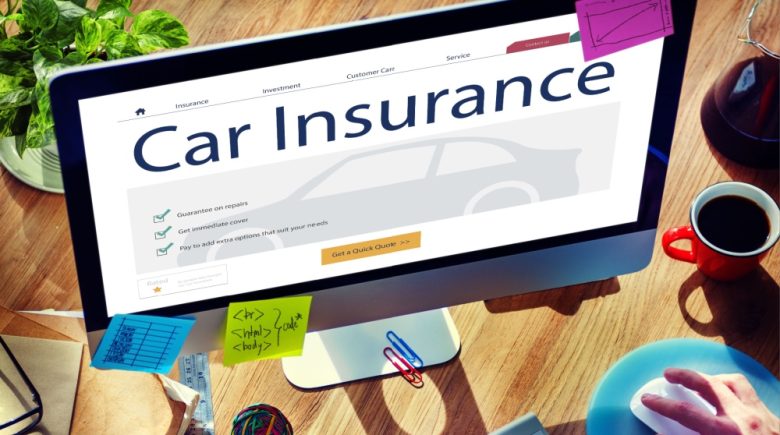Car insurance quotes give drivers an overview of the coverage options available to them. These estimates outline the projected costs of potential policies while explaining what types of incidents and damages are covered. They also specify which expenses the insurer will pay and which remain the driver’s responsibility. In addition, coverage limits define the maximum amount an insurer will pay for certain events. By understanding these details upfront, drivers can better identify policies that fit their needs.
Quotes also include essential details about deductibles and policy terms. A deductible is the amount you must pay out of pocket before your insurance kicks in. Reviewing this fine print carefully helps prevent unexpected expenses later and ensures you’re financially prepared if a claim arises. By comparing multiple quotes, drivers can find the right balance between comprehensive protection and affordability, tailored to their lifestyle and budget. Choosing wisely helps ensure peace of mind on the road.
Factors That Influence Car Insurance Quotes
Insurance premiums are not fixed—they vary based on several factors insurers evaluate when calculating costs. Seven common influences include:
1. Driving History
A clean driving record usually means lower premiums, as insurers view safe drivers as lower-risk. On the other hand, traffic violations and accidents typically lead to higher rates.
2. Vehicle Type
The kind of car you drive impacts your insurance costs. Vehicles with strong safety ratings often come with lower premiums because they’re cheaper to repair or replace. Conversely, high-performance or luxury vehicles are more expensive to insure due to their higher repair costs and risk factors.
3. Location
Where you live and park your car matters. Urban areas with higher rates of theft, vandalism, and accidents generally have higher premiums compared to suburban or rural areas.
4. Credit History
Many insurers consider your credit score when setting premiums. Strong credit often translates to lower rates, while poor credit can raise costs. The reasoning is that financial responsibility may reflect overall reliability, even behind the wheel.
5. Coverage Limits
The more coverage you choose, the more you’ll pay. Higher limits provide greater financial protection but increase premiums. Opting for lower limits reduces monthly costs but may leave you vulnerable to large expenses if an accident occurs.
6. Deductible
Your deductible is the amount you pay before insurance covers the rest. A higher deductible lowers your premium but requires you to pay more upfront in case of a claim. A lower deductible means less out-of-pocket cost during a claim but higher monthly payments.
7. Age
Younger drivers, especially teens, face higher premiums due to their increased likelihood of accidents. Rates usually decrease as drivers gain more experience, particularly after age 25—especially if they maintain a clean record.
How to Get Insurance Quotes
Technology has made getting car insurance quotes fast and convenient. By filling out forms on insurer websites or comparison platforms, drivers can view estimates from multiple providers side by side in just minutes. This makes it easy to find affordable options with minimal effort.
Traditional methods remain useful as well. Speaking with an insurance agent—either over the phone or in person—can help you explore tailored coverage. While captive agents represent only one insurer, independent agents compare rates from multiple companies and use their expertise to find the best balance of coverage and cost for your situation.
Typical Car Insurance Costs
Industry data shows average annual premiums in the U.S. are roughly:
- Liability coverage: $600
- Collision coverage: $360
- Comprehensive coverage: $160
These figures serve only as benchmarks. Actual costs vary depending on factors such as your location, driving record, vehicle type, and insurer. Since no two policies are alike, comparing multiple quotes is essential for securing the best value.
Bottom Line
While affordability matters, understanding coverage is equally important when choosing auto insurance. Carefully review limits, deductibles, and policy terms against your personal needs and state requirements. Minimum liability coverage may not be enough if you have significant assets at risk. To ensure long-term financial security, compare policies annually, as your needs may change. By balancing adequate protection with reasonable premiums, you’ll be prepared for whatever comes your way on the road.
Car insurance quotes give drivers an overview of the coverage options available to them. These estimates outline the projected costs of potential policies while explaining what types of incidents and damages are covered. They also specify which expenses the insurer will pay and which remain the driver’s responsibility. In addition, coverage limits define the maximum amount an insurer will pay for certain events. By understanding these details upfront, drivers can better identify policies that fit their needs.
Quotes also include essential details about deductibles and policy terms. A deductible is the amount you must pay out of pocket before your insurance kicks in. Reviewing this fine print carefully helps prevent unexpected expenses later and ensures you’re financially prepared if a claim arises. By comparing multiple quotes, drivers can find the right balance between comprehensive protection and affordability, tailored to their lifestyle and budget. Choosing wisely helps ensure peace of mind on the road.
Factors That Influence Car Insurance Quotes
Insurance premiums are not fixed—they vary based on several factors insurers evaluate when calculating costs. Seven common influences include:
1. Driving History
A clean driving record usually means lower premiums, as insurers view safe drivers as lower-risk. On the other hand, traffic violations and accidents typically lead to higher rates.
2. Vehicle Type
The kind of car you drive impacts your insurance costs. Vehicles with strong safety ratings often come with lower premiums because they’re cheaper to repair or replace. Conversely, high-performance or luxury vehicles are more expensive to insure due to their higher repair costs and risk factors.
3. Location
Where you live and park your car matters. Urban areas with higher rates of theft, vandalism, and accidents generally have higher premiums compared to suburban or rural areas.
4. Credit History
Many insurers consider your credit score when setting premiums. Strong credit often translates to lower rates, while poor credit can raise costs. The reasoning is that financial responsibility may reflect overall reliability, even behind the wheel.
5. Coverage Limits
The more coverage you choose, the more you’ll pay. Higher limits provide greater financial protection but increase premiums. Opting for lower limits reduces monthly costs but may leave you vulnerable to large expenses if an accident occurs.
6. Deductible
Your deductible is the amount you pay before insurance covers the rest. A higher deductible lowers your premium but requires you to pay more upfront in case of a claim. A lower deductible means less out-of-pocket cost during a claim but higher monthly payments.
7. Age
Younger drivers, especially teens, face higher premiums due to their increased likelihood of accidents. Rates usually decrease as drivers gain more experience, particularly after age 25—especially if they maintain a clean record.
How to Get Insurance Quotes
Technology has made getting car insurance quotes fast and convenient. By filling out forms on insurer websites or comparison platforms, drivers can view estimates from multiple providers side by side in just minutes. This makes it easy to find affordable options with minimal effort.
Traditional methods remain useful as well. Speaking with an insurance agent—either over the phone or in person—can help you explore tailored coverage. While captive agents represent only one insurer, independent agents compare rates from multiple companies and use their expertise to find the best balance of coverage and cost for your situation.
Typical Car Insurance Costs
Industry data shows average annual premiums in the U.S. are roughly:
- Liability coverage: $600
- Collision coverage: $360
- Comprehensive coverage: $160
These figures serve only as benchmarks. Actual costs vary depending on factors such as your location, driving record, vehicle type, and insurer. Since no two policies are alike, comparing multiple quotes is essential for securing the best value.
Bottom Line
While affordability matters, understanding coverage is equally important when choosing auto insurance. Carefully review limits, deductibles, and policy terms against your personal needs and state requirements. Minimum liability coverage may not be enough if you have significant assets at risk. To ensure long-term financial security, compare policies annually, as your needs may change. By balancing adequate protection with reasonable premiums, you’ll be prepared for whatever comes your way on the road.



